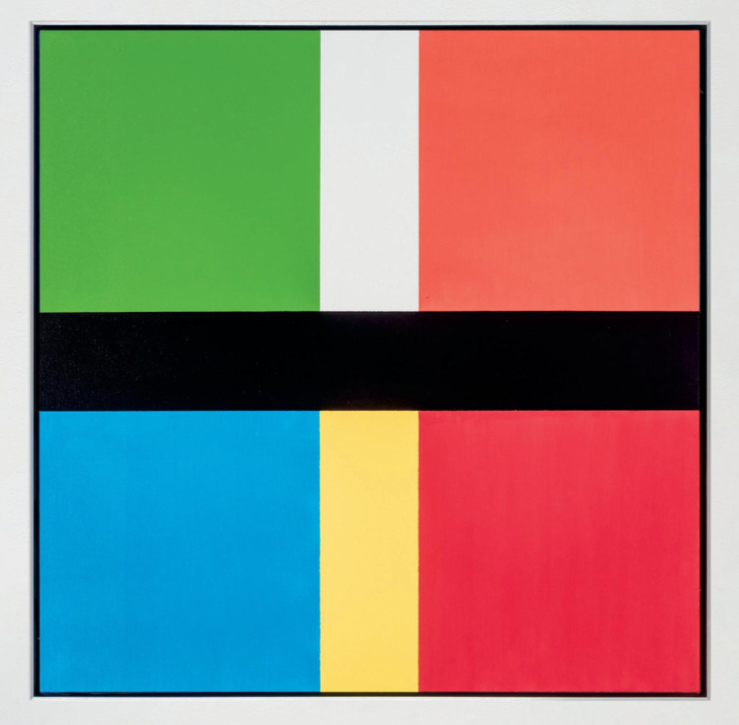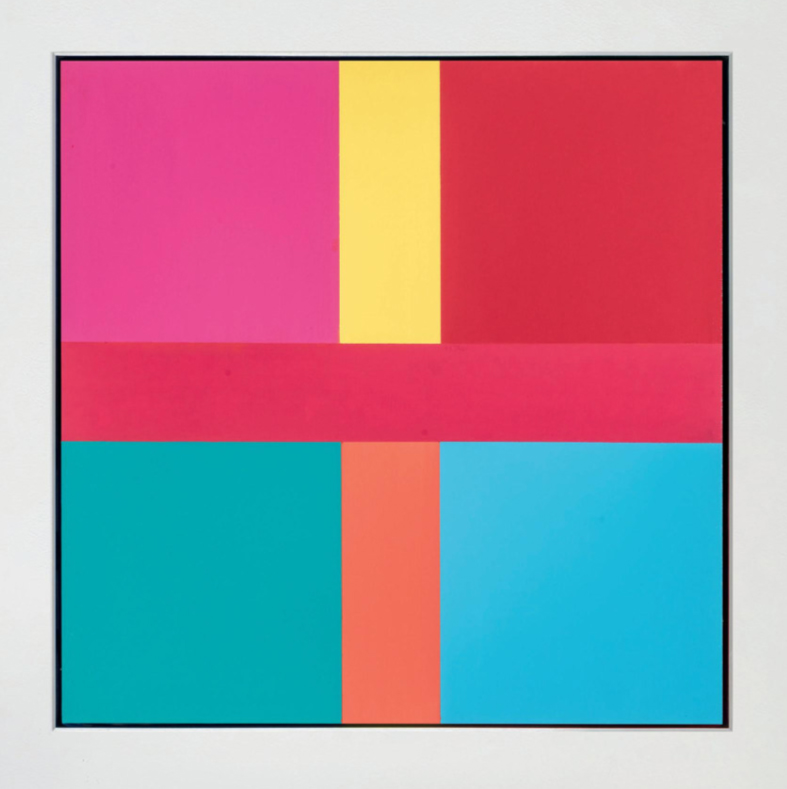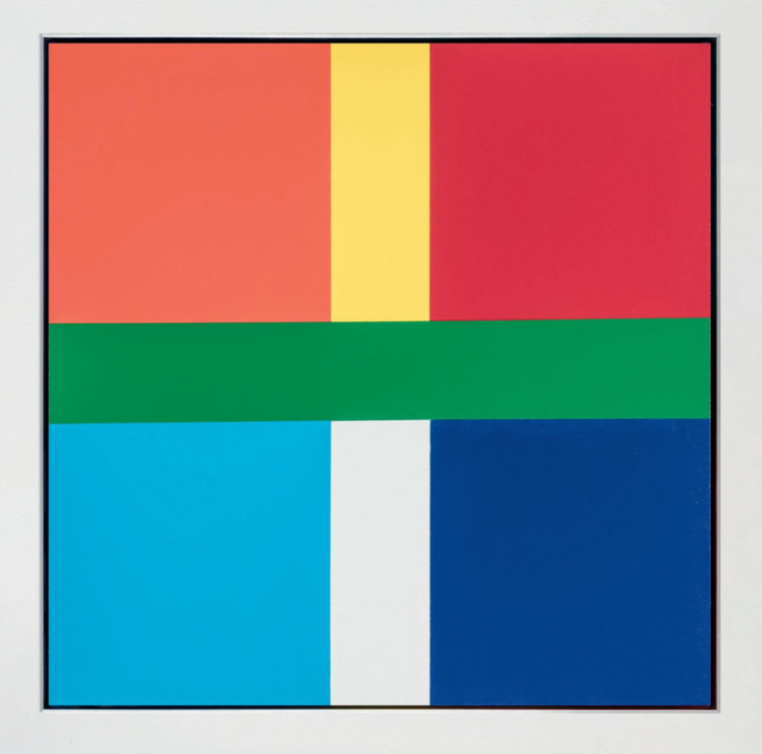by Steve Rockwell
At the heart of his practice, Jaan Poldaas was a painter, albeit one with a rigorous conceptual bent. Whatever the systems and rules he may have set in the execution of the essentially minimalist geometries, his application of the paint alone was far from perfunctory. Patrick Barfoot’s 2020 documentary film Jaan Poldaas: New Work makes this evident. Shot in the artist’s studio in October 2013, Poldaas is seen at work remarking, “Part of the pleasure here is the anticipation…. I’ll get to see how these [yellows] look with the reds on them.”

Poldaas held strong views on representation in art, even on a symbolic level. “There is almost something morbid about dead pigment trying represent something alive.” Yet, the artist’s E.G. Series (1978–2011) suggests at least a nuanced qualification of what is meant by representation, if not an outright contradiction. The hinge of distinction appears to be colour as material extension. By matching the type of paint and its application, say of the Metro Police Security Yellow, or the Green of Metro Parks, palpable aspects of our lived environment are made concrete, the caveat here being their verbal tag. The designation of the hues in the E.G. Series were precise. If blue, it’s a Via Rail Blue, if red, it’s a Coca-Cola Red.
Paint allotments to Poldaas established their frame through language. To cite Barfoot’s documentary again, “Generally, I’ll try to represent as broad a range of yellows as can be comfortably accommodated by the word. There is a linguistic limit.” If the colour in question fell to chrome yellow, for instance, its import drew more from its public use as road and parking lot markers than the personal and emotive. It’s a colour philosophy in stark contrast to one held by Kandinsky, who saw yellow as “warm, cheeky, and exciting.”

The artist’s reductionist impulse led him to delve deep into life’s foundational principles. Poldaas held the conviction that, “If we weren’t here to see it there would be no light. So the natural condition of things is darkness.” A pioneering minimalist work that addresses this theme directly is light artist Dan Flavin’s 1963 The Nominal Three (To William of Ockham). I learned in an 1998 interview with Poldaas that it’s a piece that had intrigued him for many years. Ockham’s Razor theory resonated with the artist: “Entities are not to be multiplied beyond necessity.” Poldaas liked Ockham’s “minimalism,” but not his theology.
The 12 paintings in the 2018 Poldaas Last Series measure 60 by 60 centimetres. That they frame just beyond shoulder to shoulder and head to chest is significant. Each seem to demand a sequenced close view as if standing at a crosswalk. We wait for the vertical band to change colour before crossing. Put alternatively in the artist’s own words, “On a T-surface lines do not cross; they might be said to stop when meeting, and start again in passing each other.” As verticals we stop. The traffic passes, and we continue walking.
The passage of time may be extrapolated in the Last Series paintings from the 60 centimetre ticks of their square measure. There are 3,600 seconds in an hour that matches the number of centimetre bits in each painting. It can also be seen as ten 360 degree rotations of a circle, or ten 24 hour periods. It’s a bit of a stretch, but there are seven distinct painted areas in each work corresponding to the days of a week. Of course, if a month is assigned to each of the 12 paintings, it’s a year. The variations in colour of each painting has a precedent in Monet’s Haystack series, where the artist repeated the same subject with differences in light and atmosphere at different times of the day through the seasons in different types of weather.

The equatorial belt that binds each painting in the Last Series teases out at least a hint of geodesy as it cleaves its meridian. As Poldaas liked to tie specific things and places to his hues, I’m tempted to link our local Greenbelt as an association, aware that it may never have crossed the artist’s mind. It’s rather an application of the colour designation method that Poldaas practiced over his career. It might just as well have been one of the several colour belts required before reaching the Karate Black Belt. This later reference has the advantage of signalling the rigour and mental discipline we have come to know of the artist’s work habits.
The legacy that Jaan Poldaas left to the arts community was a model of integrity to a vision that survived the fluctuations of fads and fashions, not only of decades past, but very possibly ones to come.
Jaan Poldaas: 2018 The Last Picture Show and Anniversary: TTC Commission Proposal Studies: April 25 – May25, 2024 at Birch Contemporary, 129 Tecumseth Street, Toronto, Ontario, M6J 2H2 Canada
